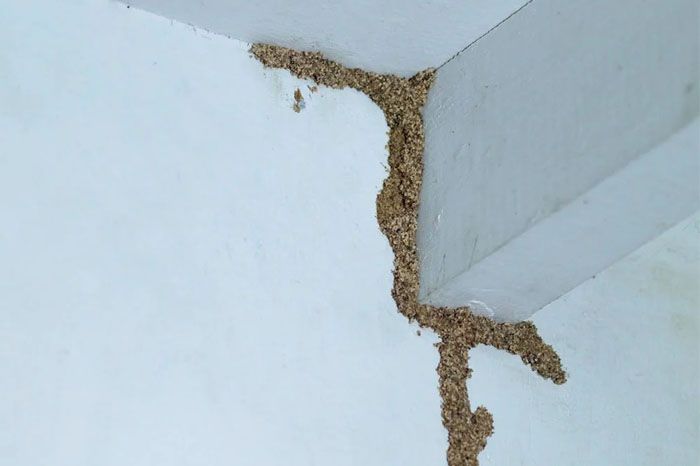Termite Tubes: What You Need to Know and What to Do Next

Termite Tubes: What You Need to Know and What to Do Next
When it comes to homeownership, few discoveries are as unsettling as spotting termite tubes in your basement. These small, mud-like tunnels are an alarming sign that termites are actively working their way through your home’s structure. Ignoring them is not an option, but with the right knowledge and a professional approach, you can handle the problem effectively.
Let’s break it down step by step: how to identify termite tubes, why they appear, and most importantly, what to do when you find them.
What Are Termite Tubes and Why Are They a Big Deal?
Understanding Termite Tubes
Termite tubes, also called mud tubes, are thin tunnels made from soil, wood particles, and termite saliva. They act as protective highways, allowing termites to travel between their colony and their food source—your home's wooden structures.
Why Termites Build Tubes
Termites are fragile creatures. They need moisture and protection from open air and predators. These tubes help them stay hidden while maintaining a humid environment inside the tunnel, which is essential for their survival.
Where You’ll Find Them
- Along basement walls
- On wooden beams and joists
- Near foundation cracks
- Around pipes or vents leading into your home
Signs of Active Termite Tubes
Spotting a tube doesn’t always mean it's currently in use. Here’s how to tell the difference:
Active Tubes:
- Moist, muddy appearance
- Termites visible if the tube is broken open
- Continually rebuilt if disturbed
Inactive Tubes:
- Dry, brittle, and crumbling
- No termites present
- No rebuilding if the tube is broken
Pro Tip:
If you suspect the tubes are active, resist the urge to break them apart. Termites may scatter deeper into your walls, making them harder to locate and treat.
Immediate Steps to Take When You Spot Termite Tubes
Finding termite tubes can be stressful, but quick action can minimize damage.
1. Don’t Disturb the Tubes
As tempting as it might be, avoid breaking or removing the tubes. This can cause termites to retreat and create new tunnels in harder-to-reach areas.
2. Inspect Surrounding Areas
Check the basement thoroughly. Look for more tubes, hollow-sounding wood, or piles of discarded wings. The more evidence you find, the better prepared a professional exterminator will be.
3. Document the Evidence
Take clear photos of the tubes and any damage you’ve spotted. These photos will help your pest control provider assess the severity of the infestation.
4. Call a Professional Pest Control Service
This isn’t a DIY situation. Termites are persistent, and professional treatments are the only way to eliminate them entirely.
How Professionals Handle Termite Tubes
When you call a pest control expert, they’ll typically follow these steps:
1. Inspection and Assessment
A professional technician will inspect your home, assess the damage, and identify the colony’s location.
2. Treatment Options
- Bait Stations: These draw termites away from your home and eliminate the colony over time.
- Liquid Barriers: These create a protective chemical zone around your home, preventing termites from re-entering.
- Foam Treatments: These are used in hard-to-reach spaces like wall voids and cracks.
3. Follow-Up Visits
Termite treatments often require follow-ups to ensure the infestation is fully cleared and no new colonies are forming.
Preventing Future Termite Problems
1. Moisture Control
Termites thrive in damp environments. Fix any leaks in your basement, install proper drainage, and use a dehumidifier if needed.
2. Proper Ventilation
Good airflow keeps moisture levels down, making your home less appealing to termites.
3. Routine Inspections
Schedule annual termite inspections with a professional pest control service to catch issues early.
4. Avoid Wood-to-Soil Contact
Make sure wooden structures, like beams or supports, don’t come into direct contact with soil.
Why Professional Help Matters
Termites are one of the most challenging pests to eliminate without professional tools and expertise. DIY termite treatments are rarely effective, and delays can lead to costly structural damage.
Benefits of Professional Pest Control:
- Comprehensive inspections
- Effective treatment plans
- Long-term protection strategies
When it comes to protecting your biggest investment—your home—it’s always better to be safe than sorry.
Take Action Today
Termite tubes are a serious warning sign, but they don’t have to be a disaster. With prompt action and professional help, you can stop termites in their tracks and prevent further damage.
If you’ve spotted termite tubes in your home, don’t wait. Call Firefly Pest Control at 704-908-6406 today for a thorough inspection and reliable treatment solutions. Protect your home and your peace of mind with Firefly Pest Control!
Join the Customers That Trust FireFly
To Keep thier Homes Bug-Free
Let's Get Started Today!!!
A Better Experience Starts With Firefly

No more wasting time & Money on home remedies that don't work.
First Treatment Pest Control
Basic Barrier – free re-treatment
$ 115 Per Quarter
- Inspection and Assessment
- Identification of Pest Types
- Customized Treatment Plan
- Extermination and Management
- Preventive Measures
- Does Not Include: Flying Stinging Insects, Termites or Rodents
Maximum Barrier – free re-treatment
$ 280 Per Quarter
- Includes Everything in Basic Pest Control
- Identification of Pest Types
- Customized Treatment Plan
- Includes Mosquito Barrier from April - October
- Includes Fleas and Ticks
- Does Not Include: Flying Stinging Insects, Termites or Rodents

